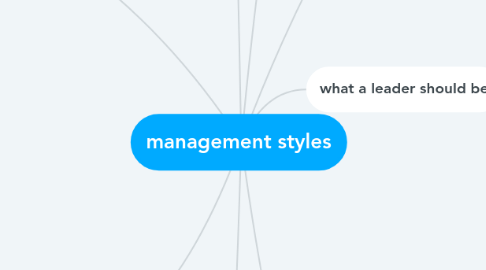
1. common management tasks
1.1. planning
1.1.1. gives sense and perpose
1.1.2. goals
1.1.3. tasks and resources
1.2. organising
1.2.1. assigning grouping tasks establishing authority
1.3. staffing
1.3.1. ensure that the right person is in right job
1.4. leading and directing
1.4.1. directing: orders, instructions, guidance
1.4.2. leading: influence of motivation
1.5. controlling
1.5.1. appropriate corrections
1.5.2. in production
1.5.2.1. quality, cost, machine capacity, use of materials
1.5.3. finance and accounting
1.5.3.1. profit, capital expenditure, liquidity, inventories, costs, cash flow
1.5.4. personnel
1.5.4.1. lost time due to industrial disputes
1.5.4.2. absrnteism, sickness, pensions
1.5.4.3. wage and salary, levels of job satisfaction/dissatisfaction
1.5.4.4. safety
1.5.5. marketing
1.5.5.1. sales volume
1.5.5.2. sales expenditure, credit
1.5.5.3. advertising costs
1.5.5.4. performance of sales personnel
1.5.5.5. customer satisfaction, sales revenue
2. managerial roles
2.1. interpersonal roles
2.1.1. figure-head
2.1.2. leaders
2.1.3. liaison officers
2.2. informational role
2.2.1. monitors
2.2.2. disseminators
2.2.3. spokespeople
2.3. decisional role
2.3.1. enterpreneurs
2.3.2. disturbance handlers
2.3.3. resource allocators
2.3.4. negotiators
3. objectives, strategy and tactics
3.1. objectives
3.1.1. long-term
3.1.2. organisation's aim
3.1.3. very broad in nature
3.2. strategy
3.2.1. to achieve overall objectives
3.2.2. the 'route'
3.3. tactics
3.3.1. operational plan
3.3.2. the detailed steps
3.3.3. day-to-day, week to week
4. nature and nurture
4.1. women are more collaborative
4.2. don't like self-promotion
4.3. historically more cooperative
4.4. people react badly on agressive women- collab. approach is to assert women's authority
4.5. biology matters, brains work differently it affects the way they manage
4.6. women's way of doing things succeeds
4.7. new knowledge-based economy demands for collaborative managers encourage work in groups
4.8. empathetic but less capable of other tasks
4.9. large variations within groups
5. management styles
5.1. Model for leadership - army (orders, officers, subordinates)
5.2. Vidionary-charismatic leader, dynamism, energy
5.3. Boss' man. style can influence the whole organisation's one
5.4. Asian countries - management by consensus=decisions are not imposed from above in a topdown approach=consultation
5.5. Women more important as managers cause they have power of consensus
5.6. coaching and mentoring (skills required by a particular organisational culture)
5.7. encourage employees' initiative empowerment decision-making decentralised and less bureacratic, delegation to let others feel responsible for work
6. management functions
6.1. personnel function
6.1.1. employee resourcing
6.1.2. training and development
6.1.3. pay
6.1.4. employee relations
6.2. production function (production and operations management-POM)
6.2.1. design
6.2.2. planning
6.2.3. operation
6.2.4. control
6.3. financial and accounting function
6.3.1. collection
6.3.2. recording
6.3.3. presentation
6.3.4. analisys of financial data
6.3.5. how to spend money
6.4. marketing function
6.4.1. identifying market opportunities
6.4.2. researching markets
6.4.3. designing marketing strategies
6.4.4. implementing marketing programmes
7. what a leader should be
7.1. good teacher&communicator
7.2. manage time and use it effectively
7.3. technical competence
7.4. provide vision
7.5. be visible and approachable
7.5.1. should be out with people
7.5.2. get feedback
7.5.3. make short speeches
7.6. introspective
7.7. dependable
7.8. open-minded
7.9. have sense of humour
8. managers need a makover
8.1. management is getting people together to accomplish desired goals
8.2. what makes us motivated
8.2.1. challenging project
8.2.2. need to stretch ourselves
8.2.3. a lot of autonomy
8.2.4. opportunity to collaborate with others
8.2.5. importance for organisation

